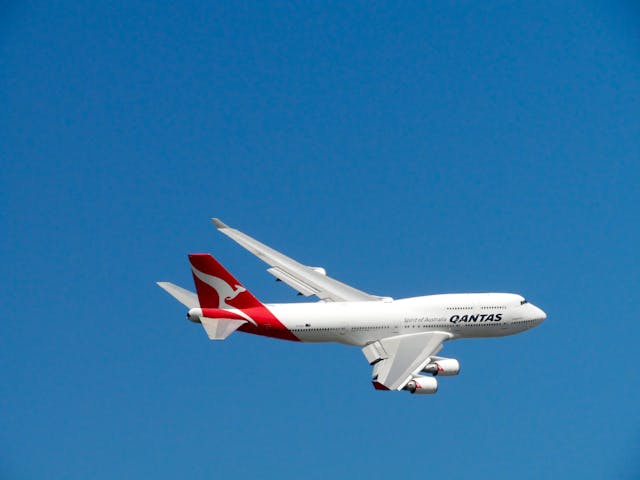
How does a TCAS system work? A TCAS system works by analyzing another aircraft’s position, altitude, and speed and working out if a collision is likely, before offering advice to both planes.
TCAS stands for Traffic Collision Avoidance System, and it has been installed on most commercial aircraft since the 1980s. A need for such a system was recognized after two planes collided over the Grand Canyon in 1956. A United Air Line plane collided with a Trans World Airlines plane. 128 people died. At the time, there was uncontrolled airspace where it was the pilot’s responsibility to keep an eye out for other planes, something which has been reduced. This collision was the worst aviation accident to date, and it sparked calls for systems to prevent it. The TCAS was one of those systems.
TCAS can alert pilots of an impending collision, but it wouldn’t work without something called a transponder. A transponder is basically a device that receives and communicates information over radio waves. Air traffic control radar systems send out a radio signal that is picked up by planes. Each transponder is programmed with the plane’s identification number, and the transponder responds to the radar signal with its identification number. It also transmits information about the plane’s altitude, speed, and direction. Modern transponders can send out even more information. Air traffic control can use this to work out the locations of planes and track their routes. Flight watching websites, such as flightradar.com, also use this system to track flights around the world. Different transponders transmit on different frequencies. Military aircraft have their own codes. In fact, transponders were invented so that it would be possible to tell civilian and military aircraft apart.
All aircraft are also equipped with radar. They are not as powerful as the radar on the ground, but they can see for about 100 km. Modern passenger jets fly at about 900 km/h, so 100 km gives them almost five minutes to deal with planes that might be heading towards them. Pilots have a lot to do in the cockpit, and they can’t spend the whole time looking out for other planes. They are human, which means they cannot concentrate indefinitely, and they get distracted. They also cannot see that far at night. To help them, TCAS has been installed.
TCAS constantly scans the sky around the plane to look for other aircraft. They send out radio signals looking for other transponders and they get a reply if they find one. If air traffic control know that two aircraft will be coming close, they put them at different altitude bands, but many things can go wrong that put the planes on the same altitude. TCAS finds planes by their transponders and analyzes their altitude, speed, and position. From this data, it works out the likelihood that the two planes will meet. Modern transponders transmit all of the data, but older planes worked out the distance and trajectory by timing how long the radio signal took to come back from the other plane.
The TCAS is then programmed with two warning states. The first warning state is when another plane comes within 48 seconds of the aircraft. The TCAS will say, “Traffic, traffic,” and it will highlight the encroaching plane on the pilot’s display. It will display the other plane’s altitude and whether it is climbing or descending. This first stage is only a warning, and the pilot’s job is to find that aircraft, make visual contact, and then stay clear of it.
The second level of warning is where TCAS earns its money. This warning is given when the other plane is about 20 seconds out. If the two planes are still on a collision course, the TCAS will say, “Climb, climb!” or “Descend, descend.” The TCAS can also say, “Increase climb!” or “Increase descent,” which means move sharply, now. This instruction is an imperative, and it supersedes all other instructions from air traffic control. The reason for this is that the two TCAS systems are talking to each other, and they know what air traffic control doesn’t. It would be of no use if both planes climbed or if both planes descended. TCAS knows which plane has been instructed to climb and which to descend. If both pilots immediately follow their TCAS instructions, a collision will be avoided.
Even with TCAS, there are still accidents, but they are usually attributable to human error. One accident happened in Brazil because one of the planes forgot to switch their transponder on. TCAS can only work if both planes can talk to each other. Another accident happened in Germany because one of the pilot listened to air traffic control and not to his TCAS. TCAS told one plane to climb and the other plane to descend, but air traffic control told the plane that had been ordered to descend to climb. The two planes collided, and 71 people died. I expect, at some point in the future, the decision will be taken out of human hands and the TCAS system will take control of the plane until the risk of collision has passed. And this is what I learned today.
Sources
https://en.wikipedia.org/wiki/Traffic_collision_avoidance_system
https://en.wikipedia.org/wiki/1956_Grand_Canyon_mid-air_collision
https://pilotinstitute.com/what-is-tcas
https://skybrary.aero/articles/transponder
https://pilotinstitute.com/transponder-modes-explained/
https://en.wikipedia.org/wiki/Transponder_(aeronautics)
https://www.studyaircrafts.com/atc-transponder
https://en.wikipedia.org/wiki/Boeing_787_Dreamliner
Photo by Raf Jabri: https://www.pexels.com/photo/qantas-airlines-plane-on-air-113585/
